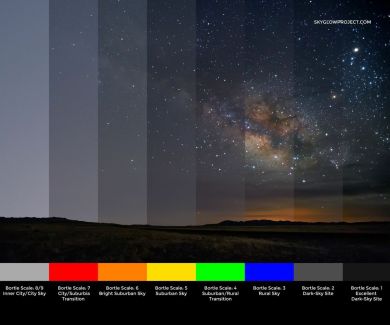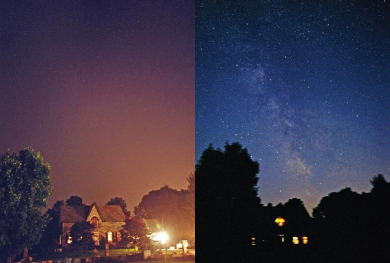Do you know what Light Pollution is?

Lighting has revolutionized our lives, but as the level of lighting increases, the impact on human health, wildlife and the planet is getting bigger and bigger. In this week's article we will explore the concept of Light Pollution.
Arguably, electric lighting is one of the most transformative inventions ever made by humans. Thanks to it, we can do the most diverse activities after sunset, which was not possible before and imposed many limitations on daily life.
However, in addition to all its advantages, the misuse and exaggeration of lighting has consequences. Even so, light pollution, unlike other forms of pollution, has remained largely ignored and is still unregulated in many countries.
What is it?
Light pollution, also known as photo-pollution, is characterized by the excessive, misdirected or invasive use of artificial outdoor lighting.
Poorly managed lighting alters the color and contrast of the night sky, eclipses natural starlight, and disrupts circadian rhythms (the 24-hour cycles of most organisms), which affects the environment, energy resources, life. wild, humans and advances in astronomy.
Surely you have already noticed that in the countryside you can observe a sky much more starry than in the city. This is due to the excess of outdoor lighting that tends to be found in cities, in contrast to the lesser outdoor lighting in rural areas.
Arguably, electric lighting is one of the most transformative inventions ever made by humans. Thanks to it, we can do the most diverse activities after sunset, which was not possible before and imposed many limitations on daily life.
However, in addition to all its advantages, the misuse and exaggeration of lighting has consequences. Even so, light pollution, unlike other forms of pollution, has remained largely ignored and is still unregulated in many countries.
What is it?
Light pollution, also known as photo-pollution, is characterized by the excessive, misdirected or invasive use of artificial outdoor lighting.
Poorly managed lighting alters the color and contrast of the night sky, eclipses natural starlight, and disrupts circadian rhythms (the 24-hour cycles of most organisms), which affects the environment, energy resources, life. wild, humans and advances in astronomy.
Surely you have already noticed that in the countryside you can observe a sky much more starry than in the city. This is due to the excess of outdoor lighting that tends to be found in cities, in contrast to the lesser outdoor lighting in rural areas.

Now that you already know the term and that you know what Light Pollution is, discover some interesting facts about this phenomenon:
- In 1994, a magnitude 6.7 earthquake caused a blackout in Los Angeles, United States of America. During that clear night, countless residents called the emergency number reporting the sight of a "huge silver cloud" in the sky. Some even feared that it was an extraterrestrial invasion. However, the "cloud" was the Milky Way, our galaxy, which had long been hidden by light pollution from city lights.
- On average 83% of the world's population lives under skies with light pollution. In Europe and the United States of America this figure reaches 99%, on average.
- In countries like Singapore, Kuwait and San Marino, the sky is so saturated with light that 99.5% of all stars that are usually visible to the naked eye are completely invisible without optical aid.
- The city with the most light pollution is Hong Kong. A 2013 study by the University of Hong Kong found that the night sky in Tsim Sha Tsui, an urban neighborhood in southern Kowloon, Hong Kong, is 1,200 times brighter than the sky in a typical urban city.
- A 2010 Ecology and Society Journal article states that the use of artificial lighting increases by an average of 20% per year, depending on the region.
- Several astronomy observatories, located in large cities, had to be moved to more remote regions due to the degree of light pollution. Some have become practically obsolete for scientific purposes due to this phenomenon.